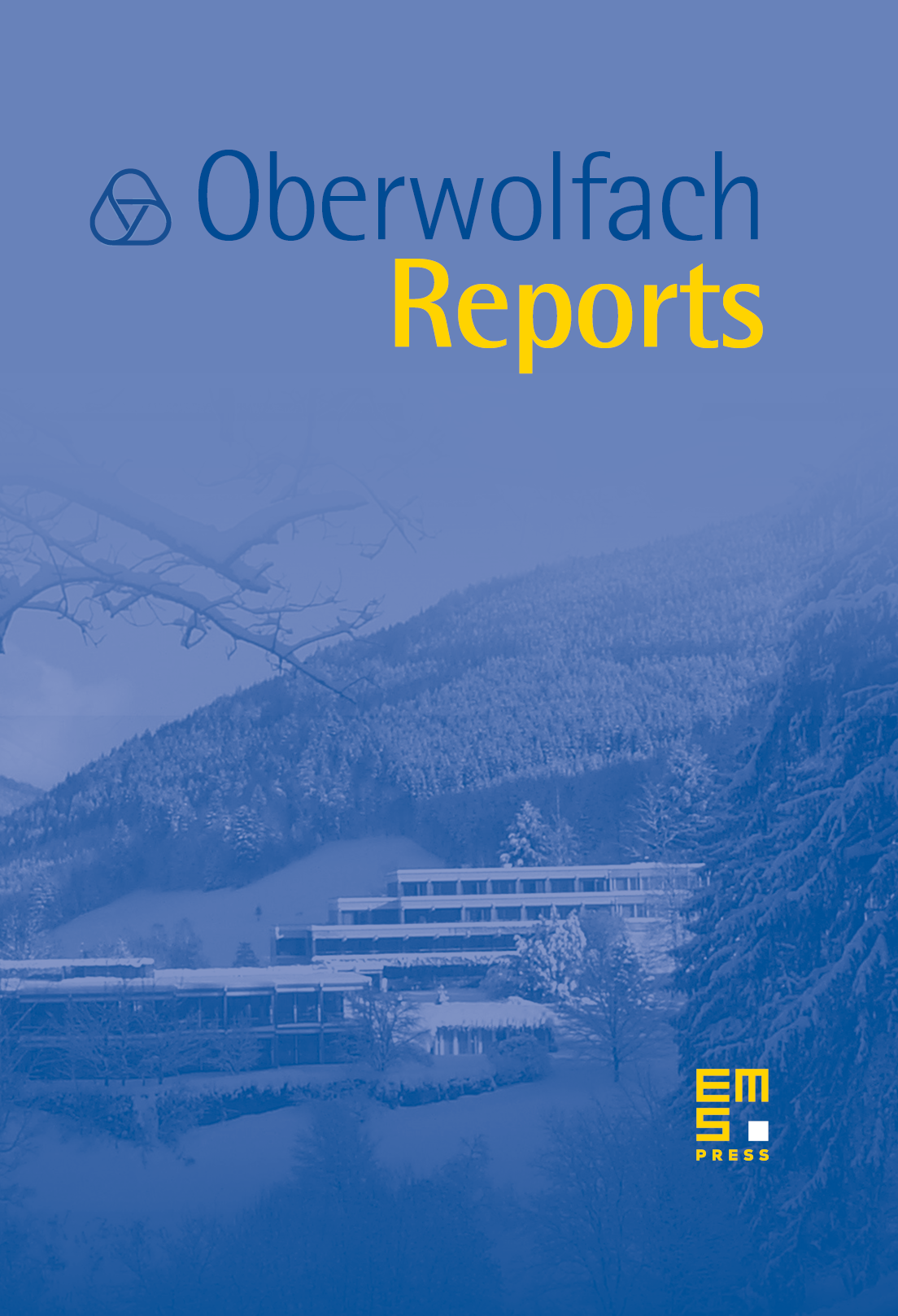Arbeitsgemeinschaft mit aktuellem Thema: Twisted K-Theory
Ulrich Bunke
Universität Regensburg, GermanyDaniel S. Freed
University of Texas at Austin, United StatesThomas Schick
Georg-August-Universität Göttingen, Germany

Abstract
The Arbeitsgemeinschaft mit aktuellem Thema “Twisted K-theory”, organized by Ulrich Bunke (Georg-August-Universität Göttingen), Dan Freed (University of Texas at Austin), and Thomas Schick (Georg-August-Universität Göttingen), was held from October 8 through October 14, 2006.
Ordinary (co)homology theories always come along with twisted versions of themselves; the most basic example is cohomology twisted by the orientation bundle, which shows up when one discusses Poincaré duality (and more general push-forward maps) for non-orientable manifolds.
Twisted -theory is important from this point of view. Even if a manifold is orientable in the ordinary sense, its -theory does not satisfy Poincaré duality. However, this is the case if one considers twisted -theory (one has to twist with the bundle of complex Clifford algebras of the cotangent bundle). In fact, some constructions of twisted cohomology theories are quite classical and can be done in the context of parametrized stable homotopy theory (which on the other hand is itself constantly developing further).
The modern interest in twisted -theory, however, stems from mathematical physics, in particular from string theory. In this theory -branes are objects whose charges are measured, in the presence of a B-field, by twisted -theory. The topological backgrounds of B-fields on a space are classified by three dimensional integral cohomology classes. Representatives of the B-field (which were called twists during the Arbeitsgemeinschaft) are precisely the data needed to define twisted -theory . In one version of the theory one associates to a twist a non-commutative -algebra whose -theory is by definition the twisted -theory.
Twisted -theory in mathematics has evolved to an interdisciplinary area which combines elements of topology, non-commutative geometry, functional analysis, representation theory, mathematical physics and other. In the Arbeitsgemeinschaft we presented various aspects of the foundations of twisted -theory and the key calculations. We discussed the construction of twisted equivariant -theory in different contexts (e.g. homotopy theory, non-commutative geometry, groupoids or stacks) and the verification of the basic functorial properties.
In order to get used to the definitions we made example calculations of twisted -theory using methods from algebraic topology (Mayer-Vietoris sequences and some spectral sequences). The Umkehr- (or integration or Gysin map) for twisted -theory is of particular importance and was illustrated through an interpretation of the classical Borel-Weil-Bott theorem. The culmination of the Arbeitsgemeinschaft was the calculation of the equivariant twisted -theory of compact Lie groups due to Freed–Hopkins–Teleman and the interpretation of this result in the context of representation theory of loop groups.
In the string theory context, some aspects of mirror symmetry are reflected in twisted -theory; under certain situations a non-commutative space-time (i.e. a space with -field) will have a dual with isomorphic -theory, possibly in shifted degrees. The mathematical formulation of this is -duality, which was worked out at the AG, and was studied also as a computational tool.
In connection with -duality, but also in the equivariant situation not only ordinary spaces but more singular objects naturally show up. This results in the need to work out equivariant twisted -theory, twisted -theory for orbifolds, and for even more singular spaces. A convenient framework to develop this in the necessary generality is the language of stacks, which was introduced and used during the AG.
A Chern character was constructed which relates twisted -theory to twisted (de Rham) cohomology. During the AG, it was worked out that sheaf theory is important here and developments in twisted -theory are in fact topological versions of similar results and constructions in algebraic geometry.
An interesting feature of the definition of twisted -theory in terms of cycles and relations is that those cycles appear naturally in geometric and analytic constructions. As mentioned above, starting from representations of compact Lie groups, an explicit construction of cycles given by families of Dirac type operators was discussed in connection with the Borel–Weil–Bott theorem. In a more elaborate way, this also works for (projective) representations of loop groups, as was first discovered in the physics related literature. Using this idea the calculation of the equivariant twisted -theory of a compact Lie group (acting on itself by conjugation) by Freed–Hopkins–Teleman (FHT) can be explicitly interpreted in terms of cycles. In this way the twisted -theory is identified with the -group of projective positive energy representations of the loop group . The twist corresponds to the “level” of the representation. It was one of the major goals of the AG to prove this FHT theorem.
It turns out that the twisted -theory on the one side, and the -group of projective positive energy representations on the other side, both have a subtle products (in -theory the Pontryagin product induced by the multiplcation map, and the Fusion product (Verlinde algebra) on the other side), and the FHT-isomorphism respects these multiplications. The construction of the -theoretic product was addressed, but because of lack of time we were not able to prove multiplicativity of the FHT-isomorphism. In the Arbeitsgemeinschaft we actually discussed a related product for the twisted -theory of orbifolds with is closely related to the quantum product in orbifold cohomology.
Altogether, there were 17 talks by the participants, two sessions where questions left open during the talks were discussed, and ample free interaction between the participants.
The conference was attended by 45 participants coming mainly from all over Europe, Northern America and Australia. It is a pleasure to thank the institute for providing a pleasant and stimulating atmosphere.
Cite this article
Ulrich Bunke, Daniel S. Freed, Thomas Schick, Arbeitsgemeinschaft mit aktuellem Thema: Twisted K-Theory. Oberwolfach Rep. 3 (2006), no. 4, pp. 2757–2804
DOI 10.4171/OWR/2006/46